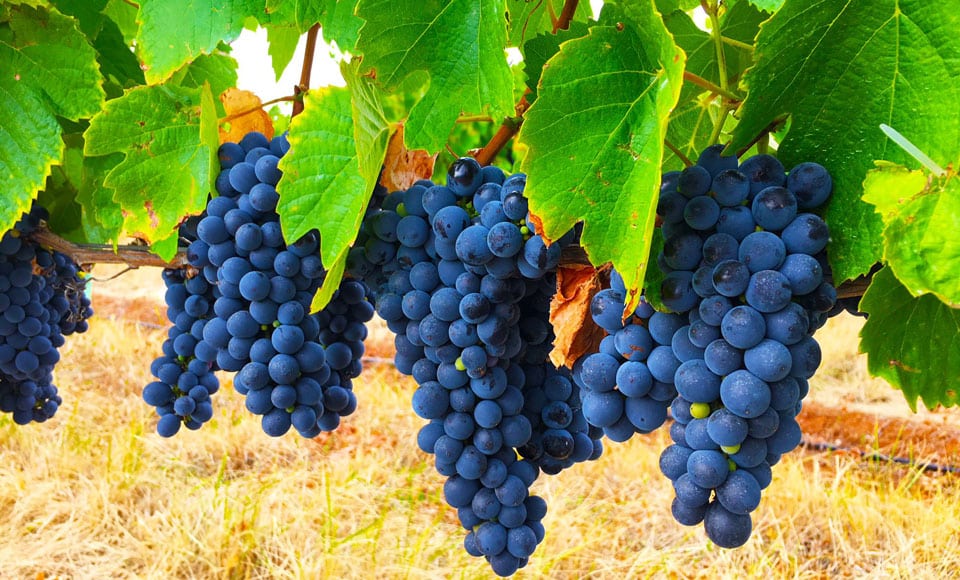Have you ever put down a month’s salary on a poker table? If not (and it’s probably best you haven’t), imagine what it’s like to rely on the flip of a card to decide your fate. Stressful, no?
Luckily for you, investing in Australian wine doesn’t have to be like this. In fact, if you follow the advice of Sydney-based artist Luke Storrier, it can be an experience as enjoyable as investing in art.
We hit up the renowned sculptor, who has been developing his own unique style for over 10 years (having worked with brands like Absolut, Hermes and M&C Saatchi), to get the low-down on the Australian arts and wine scenes.
But first: an introduction. When he’s not gathering inspiration from the outback, Luke Storrier can be found playing with ideas of isolation and solitude, collecting natural materials from his surroundings, and letting them inform his work.
The result? Would-be lifeless landscapes injected with majestic movement. Storrier also likes to experiment with the notions of flight and flow, mixed with a firm sense of weight, drawing inspiration from the shapes nature provides such as feathers, bones, rocks and dirt.
His signature style has landed his work in several issues of Inside Out magazine and on display at the Edit Studios launch party. Interest piqued? Dig in.
First off, Luke likened the natural flavours of Austraila’s cornerstone wines to his organically inspired sculptures. “As with art, each artist is an individual soaking up the environment around them, ultimately reinterpreting their experience for other to see.” In the same way, he explained, “The wine makers and the grapes are similar; they come to the table with their own unique qualities and inject that into the overall colour, depth and flavour of the finished wine.”
“The talent of the winemaker lies in harnessing the potential of the natural flavour of the grapes, perfectly balancing the power of intense fruit with the elegance of fine tannins to create wines that are the best possible expression of each vintage.”
Take the St Hugo Coonawarra Cabernet Sauvignon and the St Hugo Barossa Cabernet Sauvignon, he said: “The regions are in the same state, but the same vintage and the same varietal will give you two entirely different wines. The Coonawarra Cabernet Sauvignon has an intense eucalyptus and mint nose, where the Barossa Cabernet shows a much more savoury spice and berry nose.”
In terms of the similarities between investing in art vs. investing in wine, Luke said, “There are certainly similarities, but ultimately it’s about personal taste. The most important factor to consider, “Is finding a personal connection to you that drives the enjoyment.” Also worth noting is, “While a lot of art is made to last for generations, not every wine is made to cellar… So it is definitely worth educating yourself on how long is ideal for each wine and individual vintage.”
“Collecting and investing are very different things—if you are merely collecting for investment purposes you can find other avenues—but if you’re looking to invest in culture then fine wine and art are very similar.”
Could investing in art actually be more lucrative than investing in wine, we asked? His response: “Why not invest in both! There’s nothing like looking at art while you sip a glass wine. For me it’s about investing in your own enjoyment; not making a decision based on what will be a lucrative purchase.”
“I would never suggest anyone purchase an artwork that they don’t love, just as one should never open a bottle of wine they are not excited to drink.”
“Investing is about making the right decision for you and choosing things for yourself that show craftsmanship and quality,” he continued. “To me, the value lies in the story of the maker and the tangible expression of how the product was created.”
To further explore the similarities between wine and art, we asked Luke to compare the sensual experience of a good bottle of red compared to a well-crafted piece of art. “As a sculptor my visual language to inspire my audience is colour, light, form and weight. Depending on what you’re trying to convey with a particular piece, one utilises the parts of that visual language to transfer that to the viewer.”
“As with a combination of viticulturist and wine maker they use their knowledge and understanding of the science and care of wine to convey different tasting notes, flavours and smells. Both (the artist and the wine maker) use the senses available to them to create connection.”
This is why different environments can encourage different feelings towards both art and wine, he points out. “Drinking wine at your kitchen table is a very different experience to drinking the same wine at the St Hugo home in the Barossa Valley. As with looking at art or sculpture in a gallery, vs. seeing it where it will spend the rest of time in your home.”
Feature Image Credit: Nikki Phillips
RELATED: The Real Difference Between A Cheap & Expensive Wine
